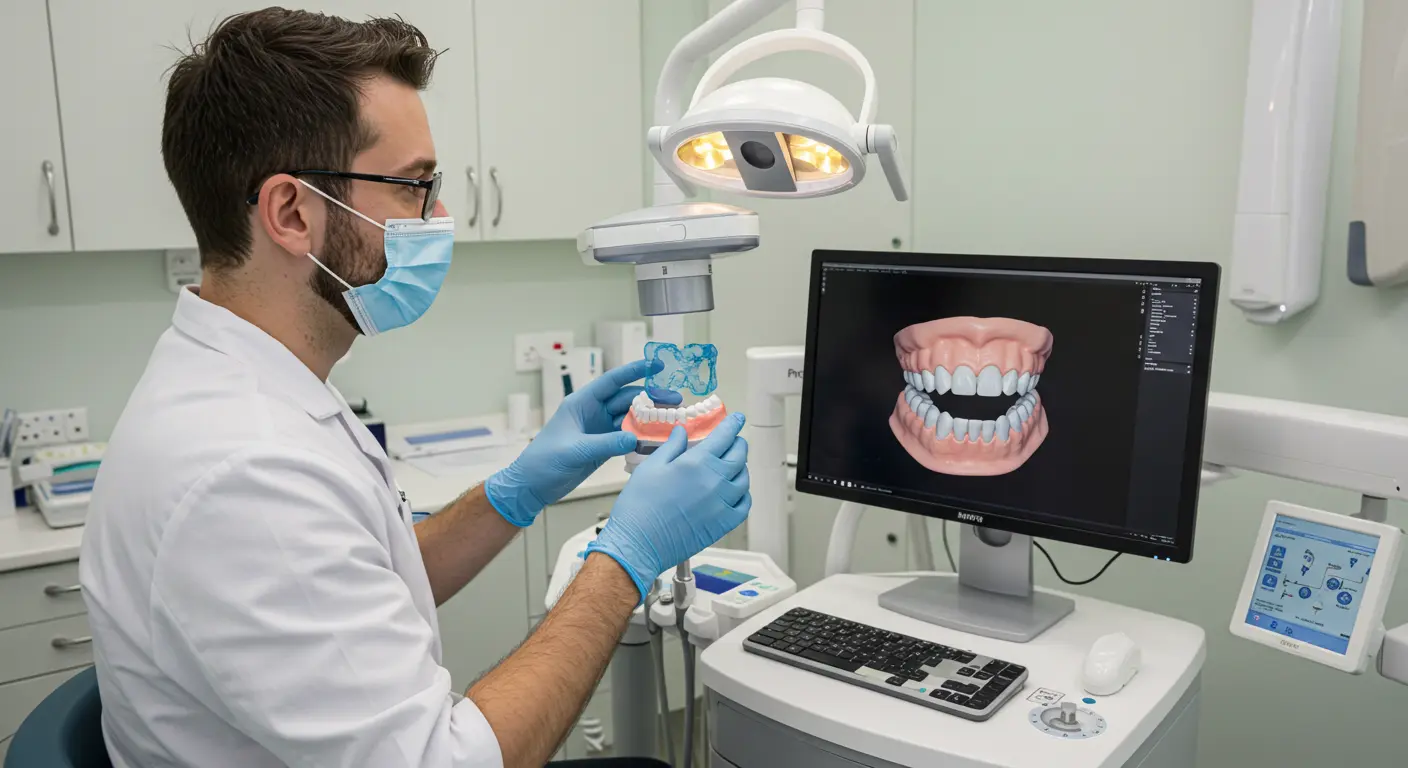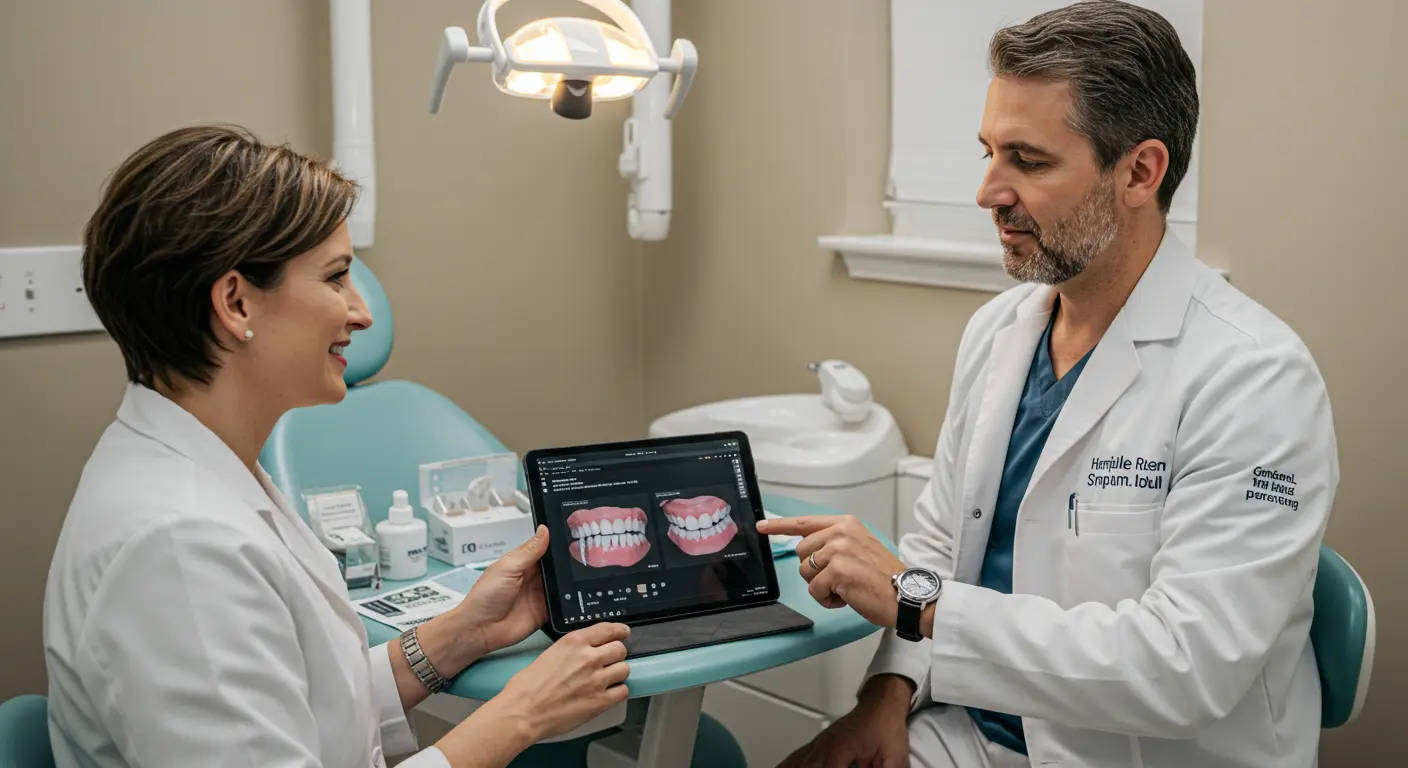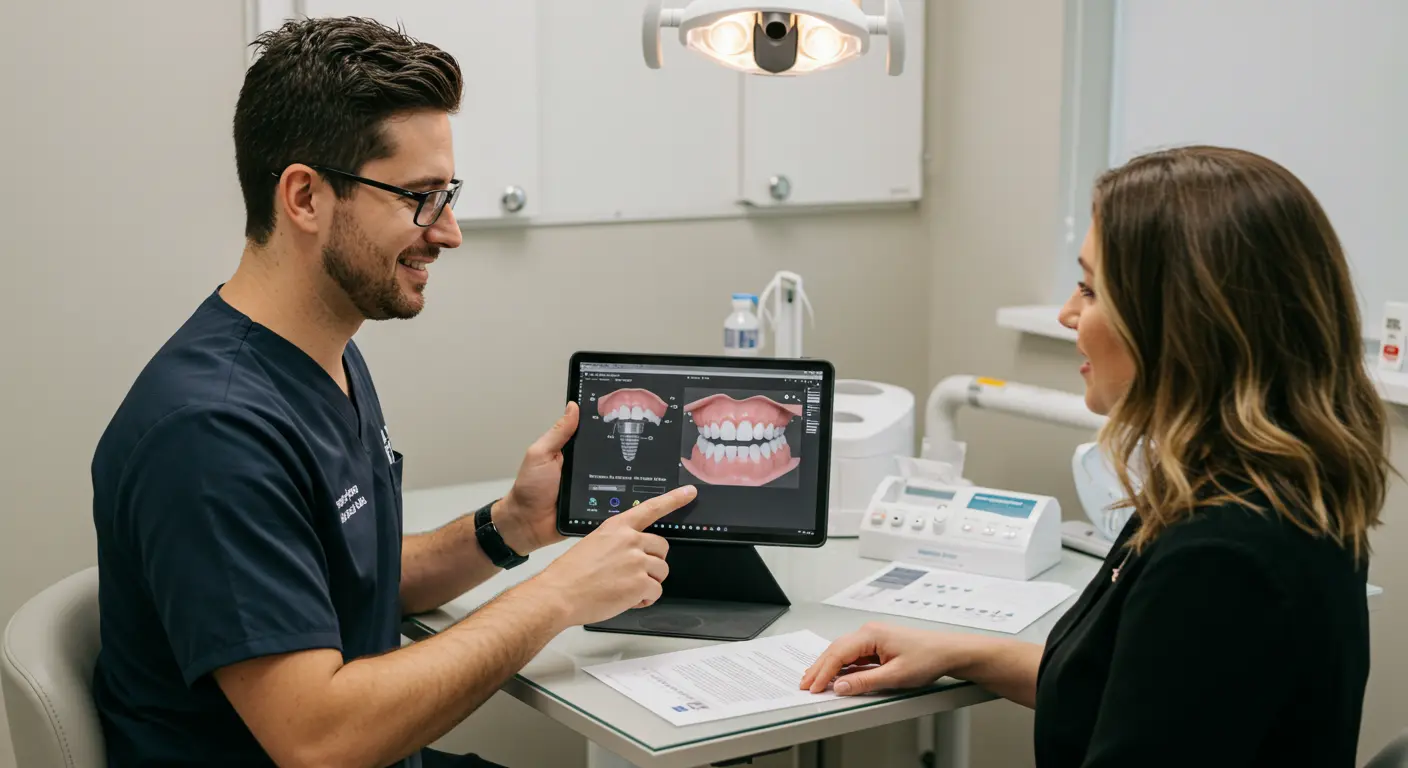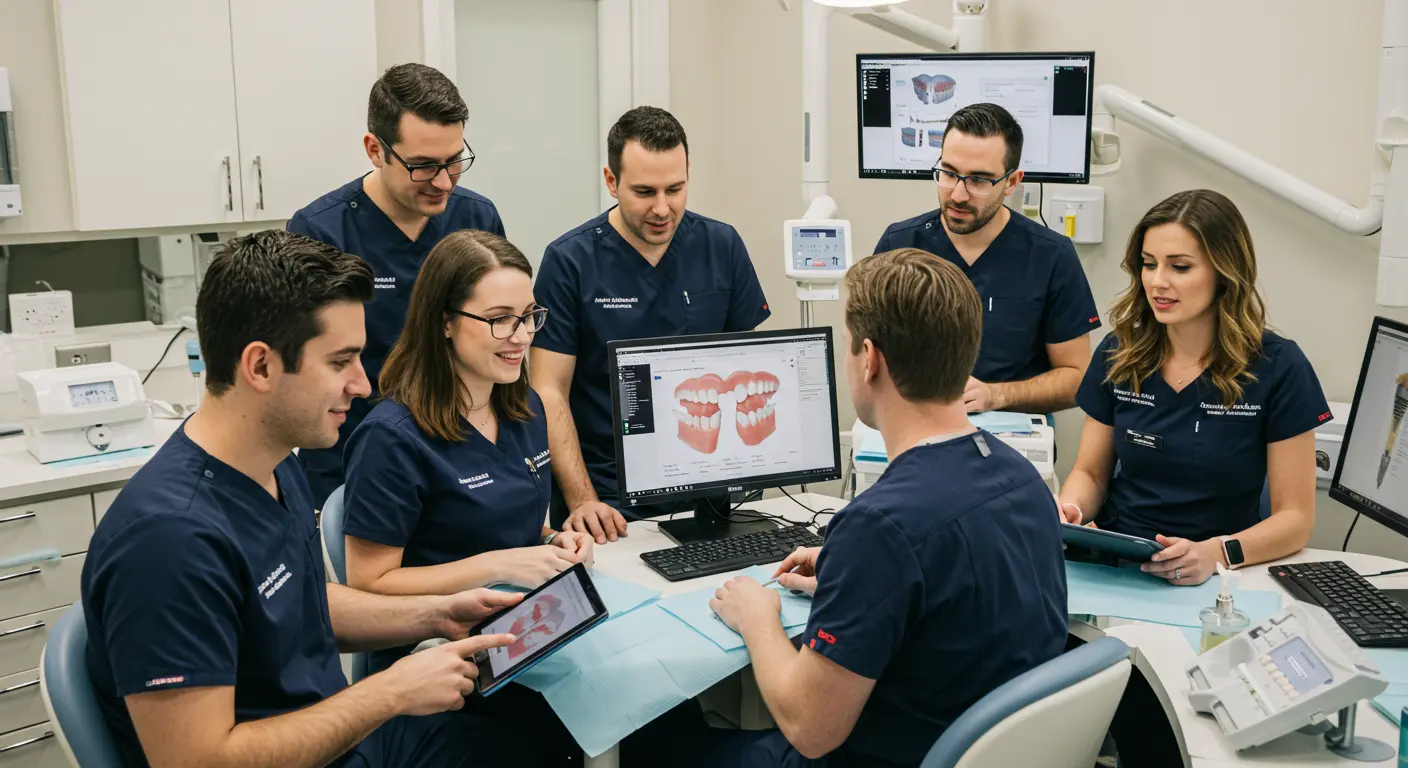Are Dental Implants the Right Option for You? A Comprehensive Guide to Restoring Your Smile
Are dental implants the right option for you? This question resonates with many individuals facing tooth loss, damaged teeth, or chronic dental issues. Are dental implants the right option for you? is not just a question of aesthetic improvement; it’s about restoring functionality, confidence, and overall oral health. With advancements in technology and a patient-centered approach, dental implants have become one of the most popular and effective solutions for replacing missing teeth. In this extensive guide, we will explore the benefits, risks, and considerations of dental implants, helping you decide if this revolutionary treatment aligns with your needs and lifestyle.
The Evolution of Dental Implants
Dental implants have come a long way since their inception. Modern dental implants are designed to provide a permanent solution for tooth replacement by fusing with the jawbone through a process called osseointegration. Over the years, innovations in digital implant planning, minimally invasive surgical techniques, and advanced biomaterials have significantly improved the success rates and aesthetics of implants. This evolution has made dental implants a reliable choice for patients of all ages seeking long-term restorative solutions.
Understanding Dental Implants
Dental implants are artificial tooth roots, typically made of titanium or zirconia, that are surgically placed into the jawbone. They serve as a stable foundation for fixed prosthetic restorations such as crowns, bridges, or dentures. The process of osseointegration, where the implant fuses with the surrounding bone, ensures that the implant remains firmly anchored, providing the strength and functionality of a natural tooth.
Are dental implants the right option for you? The answer depends on several factors, including your oral health, bone density, lifestyle, and overall expectations from the treatment. In the following sections, we’ll break down these factors and discuss how they influence the suitability of dental implants.
Who is a Candidate for Dental Implants?
Determining if dental implants are the right option for you involves a comprehensive evaluation of several key criteria. Are dental implants the right option for you? For many patients, the answer lies in a detailed assessment of their oral and general health. Consider the following factors:
Oral Health Status
Healthy Gums: Implants require healthy gum tissue to support the implant and prevent infection. Patients with severe gum disease may need periodontal treatment before proceeding with implants.
Bone Density: Sufficient bone volume and quality are crucial for the stability of the implant. In cases where bone density is low, bone grafting or alternative implant options might be necessary.
Overall Health and Lifestyle
Chronic Conditions: Conditions such as diabetes, osteoporosis, or autoimmune disorders can affect healing and implant success. A thorough medical evaluation is necessary.
Smoking: Smoking is a known risk factor that can compromise osseointegration. Patients who smoke may face higher implant failure rates and are often advised to quit or reduce smoking before the procedure.
Age Considerations: While dental implants can be used in both younger and older patients, the decision should be based on the patient’s overall health and oral condition rather than age alone.
Aesthetic and Functional Expectations
Cosmetic Goals: If you desire a natural-looking, permanent solution to improve your smile, dental implants offer unmatched aesthetic results.
Functional Requirements: Implants restore chewing efficiency and improve speech, making them ideal for patients seeking to regain full oral functionality.
Benefits of Dental Implants
Understanding the benefits of dental implants can help answer the question: Are dental implants the right option for you? The advantages of choosing dental implants include:
1. Permanent and Reliable Solution
Long-Term Durability: With proper care, dental implants can last a lifetime. They are designed to be a permanent fixture in your mouth, eliminating the need for frequent replacements.
High Success Rate: Modern implant techniques have success rates exceeding 95% in healthy patients, making them one of the most reliable options for tooth replacement.
2. Improved Functionality
Natural Chewing and Speech: Implants function like natural teeth, allowing for efficient chewing and clear speech.
Enhanced Bite Stability: Since implants are fixed and integrated with the jawbone, they provide superior stability compared to removable dentures or bridges.
3. Aesthetic Excellence
Natural Appearance: Dental implants are custom-designed to match the color, shape, and size of your natural teeth, resulting in a seamless, aesthetically pleasing restoration.
Facial Structure Preservation: Implants help preserve the jawbone, maintaining facial contours and preventing the sunken appearance often associated with tooth loss.
4. Increased Patient Confidence
Restored Self-Esteem: A complete and natural-looking smile can significantly boost your confidence, impacting both personal and professional aspects of your life.
Enhanced Quality of Life: With improved function and aesthetics, patients experience better overall satisfaction and an enhanced quality of life.
Risks and Considerations
While dental implants offer numerous benefits, it is crucial to be aware of potential risks and considerations. Are dental implants the right option for you? Understanding these factors will help you make an informed decision:
Surgical Risks
Infection: Despite strict sterilization protocols, there is always a risk of infection at the implant site.
Nerve Damage: Improper implant placement can lead to nerve injuries, causing temporary or permanent numbness.
Sinus Complications: Implants placed in the upper jaw may occasionally interfere with the sinus cavity, leading to complications.
Healing and Osseointegration
Healing Time: The process of osseointegration can take several months. During this time, the implant must fuse with the bone to provide a stable foundation.
Bone Grafting Needs: In patients with insufficient bone volume, additional procedures such as bone grafting may be necessary, which can extend the overall treatment time.
Cost Considerations
Initial Investment: Dental implants typically involve a higher upfront cost compared to other restorative options such as bridges or dentures.
Long-Term Value: Despite the initial expense, implants offer long-term durability and reduce the need for frequent replacements, ultimately providing cost efficiency over time.
Alternative Restorative Options
For those who are not ideal candidates for dental implants, there are alternative restorative options available. Evaluating these alternatives can help answer the question: Are dental implants the right option for you?
Dental Bridges
Dental bridges are fixed restorations that replace missing teeth by anchoring to adjacent teeth.
Pros: Non-surgical, less expensive, and quick to implement.
Cons: They may compromise the health of adjacent teeth and do not preserve the jawbone.
Removable Dentures
Dentures are removable prosthetics used to replace multiple missing teeth.
Pros: Generally more affordable and non-invasive.
Cons: They can be less stable, affect speech and chewing, and may require frequent adjustments.
Partial Dentures
Partial dentures are used when only a few teeth are missing.
Pros: Cost-effective and less invasive.
Cons: Similar to full dentures, they can be less stable and may cause discomfort or irritation.
The Role of Digital Technology in Implant Dentistry
Digital technology has transformed the way dental implants are planned and executed. Digital Smile Design (DSD), 3D imaging, and computer-guided surgery have become integral tools in achieving successful implant outcomes.
Digital Imaging and 3D Scanning
Precision: Digital imaging provides accurate, detailed views of the jawbone and surrounding structures, enabling precise implant placement.
Customization: 3D scans allow for the creation of personalized treatment plans that are tailored to each patient’s unique anatomy.
Reduced Surgical Errors: Computer-guided surgery minimizes human error, leading to higher success rates and reduced complications.
Digital Smile Design (DSD)
Visualization: DSD technology allows patients to see a digital mockup of their future smile before the procedure, reducing anxiety and aligning expectations.
Collaboration: Digital tools facilitate better communication between the dentist and patient, ensuring a fully customized treatment plan.
The Economic and Societal Impact of Dental Implants
The fact that approximately 5 million dental implants are placed in the U.S. each year is not just a statistic—it reflects a major shift in how we approach dental restoration. This surge in implant procedures has significant economic and societal implications:
Improved Quality of Life: Restoring lost teeth with implants enhances the ability to chew, speak, and smile confidently, leading to a better overall quality of life.
Long-Term Cost Savings: While implants may require a higher initial investment, their longevity and low maintenance requirements often result in long-term cost savings.
Advancements in Technology: The high demand for dental implants drives continuous innovation, leading to even more effective, precise, and patient-centered treatment options.
Workforce and Economic Growth: The growth of implant dentistry has created jobs and contributed to the advancement of the dental industry as a whole.
Addressing Patient Concerns and Misconceptions
Despite the many benefits, some patients may still have reservations about dental implants. Here we address some common concerns:
Is the Procedure Painful?
Modern implant surgery, aided by local anesthesia and sedation techniques, is minimally invasive and designed to minimize discomfort. Many patients report only minor discomfort during and after the procedure.
How Long Does Healing Take?
While traditional implant procedures require a healing period of 6 to 12 months for full osseointegration, advancements in digital planning and surgical techniques have significantly reduced recovery times. Many patients experience satisfactory integration within 3 to 6 months.
Are Dental Implants Suitable for Everyone?
Dental implants are not a one-size-fits-all solution. A comprehensive evaluation of your oral health, bone density, and overall medical condition is necessary to determine if implants are the right option for you. In some cases, alternative restorative options may be more appropriate.
What if I Have a Limited Budget?
Although dental implants involve a higher initial cost, their long-term benefits and durability often make them more cost-effective than other options. Many patients view implants as an investment in their oral health and overall quality of life.
Enhancing the Patient Experience
A successful dental implant procedure is not just about the technical aspects—it’s also about the overall patient experience. When patients are well-informed, comfortable, and involved in the treatment planning process, they are more likely to experience positive outcomes. At Smile Design NJ, we prioritize:
Clear Communication: Providing detailed consultations and digital visualizations to help patients understand every step of the process.
Personalized Care: Customizing treatment plans to meet individual needs and ensuring that the procedure is as comfortable as possible.
Ongoing Support: Offering comprehensive post-operative care and follow-up appointments to ensure long-term success and satisfaction.
Best Practices for Implant Success
To maximize the success of dental implants, dental professionals should adhere to a set of best practices throughout the treatment process:
Pre-Operative Phase
Comprehensive Evaluations: Conduct thorough medical and dental histories, supplemented with digital imaging and 3D scans.
Risk Assessment: Identify potential risks such as low bone density, periodontal disease, or systemic health issues.
Patient Education: Clearly explain the implant process, potential outcomes, and post-operative care to ensure informed consent.
Intra-Operative Phase
Digital Planning and Computer-Guided Surgery: Use advanced digital tools to precisely position implants.
Minimally Invasive Techniques: Employ techniques that reduce tissue trauma and speed up the healing process.
Effective Pain Management: Utilize appropriate anesthesia and sedation protocols to ensure patient comfort during surgery.
Post-Operative Phase
Strict Oral Hygiene: Provide patients with clear instructions for maintaining the implant site.
Regular Follow-Up: Schedule periodic check-ups to monitor healing and address any complications promptly.
Lifestyle Guidance: Advise patients on dietary habits, smoking cessation, and other lifestyle modifications to support long-term implant success.
Future Trends in Dental Implant Technology
The field of dental implantology is constantly evolving, and future trends promise even greater advancements in patient care and treatment outcomes. Some of these trends include:
Smart Implants
Future implants may incorporate sensors to monitor bone integration and detect early signs of complications. These smart implants will allow for real-time tracking of healing progress, enabling proactive intervention if issues arise.
Regenerative Biomaterials
Advancements in biomaterials are paving the way for implants that not only replace missing teeth but also stimulate natural bone regeneration. These regenerative materials will further enhance implant stability and longevity, even in patients with compromised bone quality.
AI-Driven Treatment Planning
Artificial intelligence is beginning to play a role in dental implantology by analyzing patient data and optimizing treatment plans. AI-driven systems can predict the best implant placement strategies and customize protocols to reduce healing time and complications.
Enhanced Digital Workflows
Continued improvements in digital imaging, 3D printing, and computer-guided surgery will make implant procedures even more precise and efficient. These enhanced digital workflows will contribute to higher success rates and improved patient satisfaction.
Comparative Analysis: Dental Implants vs. Alternative Restorative Options
While dental implants offer a permanent and highly effective solution for tooth loss, it is important to compare them with alternative restorative options to fully understand their advantages. Consider the following comparison:
| Aspect | Dental Implants | Bridges | Dentures |
|---|---|---|---|
| Stability | Fixed, integrated with bone; highly stable | Supported by adjacent teeth; may require adjustment | Removable; less stable and may shift |
| Functionality | Mimics natural teeth for optimal chewing and speech | Good function but may compromise adjacent teeth | Can impair chewing and speech if poorly fitted |
| Aesthetics | Highly natural, customizable, and permanent | Aesthetic, but may require periodic replacement | Often less natural and can affect facial structure |
| Bone Preservation | Stimulates bone growth, prevents resorption | Does not prevent bone loss | Can accelerate bone resorption over time |
| Longevity | Potentially a lifetime with proper care | Typically lasts 5-15 years | Requires regular replacement |
| Maintenance | Low maintenance post-integration | Requires cleaning of abutment teeth | Demands frequent adjustments and cleaning |
This detailed comparison highlights why dental implants are often the preferred choice for long-term oral rehabilitation, especially given their ability to preserve the jawbone and provide a natural, lasting restoration.
Economic and Societal Impact
Approximately 5 million dental implants are placed in the U.S. each year, a statistic that underscores the profound economic and societal benefits of this treatment modality. Dental implants:
Improve Quality of Life: By restoring function and aesthetics, implants help patients eat, speak, and smile confidently.
Reduce Long-Term Healthcare Costs: The durability of implants minimizes the need for repeated treatments and extractions.
Drive Technological Innovation: The high demand for implants fosters continuous advancements in dental technology.
Boost Economic Growth: The success of dental implant procedures supports the dental industry and creates numerous jobs across related sectors.
Addressing Common Misconceptions
Despite their widespread adoption, several myths persist regarding dental implants. Addressing these misconceptions can help patients make informed decisions:
Myth 1: “Dental implants are only for older patients.”
Reality: Dental implants are a viable solution for patients of all ages, provided there is sufficient bone density and overall health.
Myth 2: “Implants are too expensive.”
Reality: Although the initial cost may be higher, dental implants provide long-term benefits and durability, ultimately reducing the need for repeated dental procedures.
Myth 3: “The procedure is extremely painful.”
Reality: Advances in anesthesia, sedation, and minimally invasive surgical techniques have made dental implant procedures relatively comfortable, with many patients reporting only mild discomfort during and after surgery.
Myth 4: “Healing takes too long.”
Reality: While traditional healing periods can be lengthy, modern digital planning and surgical techniques have significantly reduced recovery times, with many patients experiencing satisfactory results within 3 to 6 months.
The Role of Patient Education
Educating patients about the benefits and process of dental implants is crucial to enhancing patient experience and outcomes. When patients understand that approximately 5 million dental implants are placed in the U.S. each year, they gain confidence in the treatment’s safety and efficacy. Effective patient education includes:
Detailed Consultations: Explaining the implant process in simple terms using digital visuals.
Interactive Tools: Utilizing Digital Smile Design (DSD) to show patients a realistic preview of their new smile.
Comprehensive Aftercare Instructions: Providing clear guidance on post-operative care to ensure optimal healing and long-term success.
Future Outlook in Dental Implantology
The future of dental implantology is bright, with continuous innovations promising even greater advancements in patient care and treatment outcomes. Emerging trends include:
Smart Implants
Future dental implants may include built-in sensors that monitor bone integration in real-time and alert dentists to potential complications, ensuring timely interventions.
Regenerative Biomaterials
The development of bioactive, regenerative materials that promote natural bone growth will further enhance the stability and longevity of dental implants, particularly for patients with compromised bone density.
AI-Driven Personalization
Artificial intelligence will increasingly be used to analyze patient data and customize treatment plans, leading to even more precise implant placement and better overall outcomes.
Enhanced Digital Workflows
Advancements in digital imaging, 3D printing, and computer-guided surgery will continue to streamline the implant process, reducing treatment times and improving the predictability of outcomes.
Conclusion
Approximately 5 million dental implants are placed in the U.S. each year—a testament to the success and transformative power of modern dental implant technology. Dental implants not only restore function and aesthetics but also play a vital role in preserving jawbone structure and enhancing overall oral health. With the integration of advanced digital planning, minimally invasive surgical techniques, and personalized treatment plans, dental implants offer a permanent solution that significantly improves patient quality of life.
Whether you are seeking to restore your smile due to trauma, decay, or periodontal disease, dental implants provide a reliable, long-lasting, and aesthetically pleasing option. As the field of implant dentistry continues to evolve with smart technologies and regenerative materials, patients can look forward to even more efficient and effective treatments in the future.
If you’re ready to invest in your long-term oral health and restore your confidence with a beautiful, functional smile, dental implants might be the right option for you. With ongoing advancements and a patient-centered approach, the future of dental implantology is here—and it’s changing lives every day.
Are you ready to explore the transformative benefits of dental implants? Contact Smile Design NJ in Westfield, NJ, today to schedule your personalized consultation. Our expert team is committed to providing state-of-the-art, patient-centered care that restores not only your smile but also your quality of life. Your journey to a radiant, confident smile begins now!










